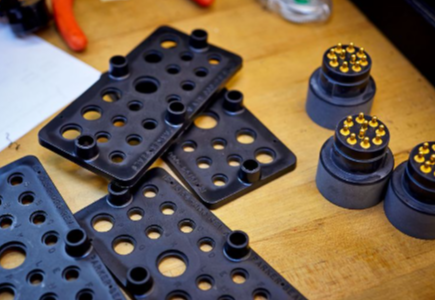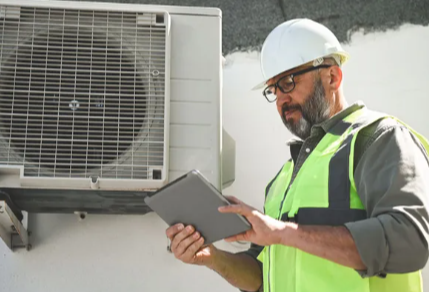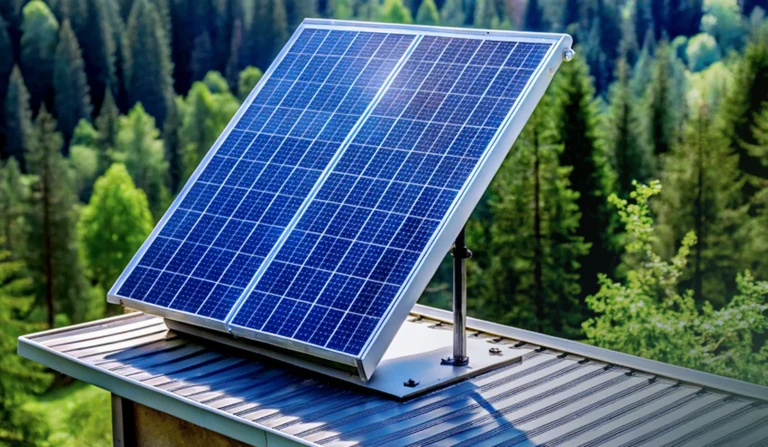Thermoplastics vs. Thermosets: Your Complete Injection Molding Guide
Choosing the right material for injection molding is crucial for product success. Thermoplastics and thermosets are the two main options, each with unique advantages and limitations affecting performance, costs, and manufacturing. This guide outlines their key properties and applications to help you make the best choice for your project.
What Are Thermoplastics?
Thermoplastics are polymer materials that become soft and moldable when heated, then harden when cooled. This reversible process allows thermoplastics to be reheated, reshaped, and recycled multiple times without significant chemical degradation.
The molecular structure of thermoplastics consists of long polymer chains held together by weak intermolecular forces. When heat is applied, these forces weaken, allowing the chains to move freely and the material to flow. Upon cooling, the chains return to their rigid state.
Common Thermoplastic Materials
Several thermoplastic materials excel in injection molding applications:
Polyethylene (PE) offers excellent chemical resistance and flexibility, making it ideal for packaging and consumer goods. Its low cost and recyclability make it a popular choice for high-volume production.
Polypropylene (PP) provides superior fatigue resistance and chemical stability. Its lightweight properties and ability to withstand repeated flexing make it perfect for living hinges and automotive components.
Polystyrene (PS) delivers excellent dimensional stability and ease of processing. Its clarity and low cost make it suitable for disposable packaging and consumer electronics housings.
ABS (Acrylonitrile Butadiene Styrene) combines strength, toughness, and heat resistance. This versatile material works well for automotive parts, electronic enclosures, and toys.
What Are Thermosets?
Thermosets undergo an irreversible chemical reaction during curing that creates permanent cross-links between polymer chains. Once cured, these materials cannot be remelted or reshaped, making them permanently rigid and heat-resistant.
The cross-linked molecular structure gives thermosets exceptional thermal stability, chemical resistance, and dimensional stability under stress. However, this permanent structure means thermosets cannot be recycled through traditional remelting processes.
Popular Thermoset Materials
Key thermoset materials used in injection molding include:
Epoxy resins provide outstanding adhesion, chemical resistance, and electrical insulation properties. They’re commonly used in electronic components and aerospace applications.
Phenolic resins offer excellent heat resistance and dimensional stability. Their flame-retardant properties make them suitable for electrical components and automotive applications.
Polyurethane delivers exceptional abrasion resistance and flexibility. Its versatility allows for applications ranging from gaskets and seals to automotive bumpers.
Silicone rubber maintains flexibility across extreme temperatures while providing excellent chemical resistance. It’s ideal for medical devices, gaskets, and food-contact applications.
Key Differences in Properties
Temperature Performance
Thermoplastics generally have lower heat resistance compared to thermosets. Most thermoplastics begin to soften at temperatures between 80°C to 150°C, though high-performance grades can withstand higher temperatures.
Thermosets maintain their structural integrity at much higher temperatures due to their cross-linked structure. Many thermosets can operate continuously at temperatures exceeding 200°C without losing their mechanical properties.
Chemical Resistance
Both material types offer chemical resistance, but thermosets typically provide superior protection against harsh chemicals and solvents. The cross-linked structure of thermosets prevents chemical penetration and swelling.
Thermoplastics may absorb certain chemicals or solvents, potentially affecting their properties. However, specific thermoplastic grades like PTFE, commonly used in filter plates, offer exceptional chemical resistance rivaling many thermosets.
Mechanical Properties
Thermosets generally provide higher strength, stiffness, and creep resistance due to their rigid cross-linked structure. They maintain their shape under constant load and resist deformation over time.
Thermoplastics offer greater impact resistance and toughness. Their ability to absorb energy through molecular chain movement makes them less likely to crack or shatter under sudden impact.
Manufacturing Considerations
Processing Requirements
Thermoplastic injection molding operates at lower temperatures and pressures, resulting in faster cycle times and lower energy consumption. The material flows easily when heated, filling complex mold geometries with minimal difficulty.
Thermoset processing requires precise temperature and time control during the curing process. Higher temperatures and pressures are typically needed, resulting in longer cycle times and higher energy costs.
Tooling and Equipment
Thermoplastic processing uses standard injection molding equipment with temperature-controlled barrels and screws. Molds can be made from various materials, including aluminum for prototype tooling.
Thermoset processing often requires specialized equipment with precise temperature control and curing capabilities. Steel molds are typically necessary due to the higher processing temperatures and pressures involved.
Quality Control
Thermoplastic parts can be easily reworked or recycled if defects occur. Rejected parts can be reground and mixed with virgin material for future use.
Thermoset parts cannot be reworked once cured. Quality control measures must be more stringent during processing, as defective parts become permanent waste.
Application Examples
Thermoplastic Applications
Consumer electronics benefit from thermoplastics’ ease of processing and aesthetic versatility. Smartphone cases, computer housings, and appliance components leverage thermoplastics’ moldability and surface finish options.
Automotive interior components utilize thermoplastics for their impact resistance and design flexibility. Dashboard components, door panels, and trim pieces take advantage of thermoplastics’ ability to create complex geometries.
Medical devices often use thermoplastics for their biocompatibility and sterilization capabilities. Single-use devices, drug delivery systems, and diagnostic equipment benefit from thermoplastics’ regulatory acceptance.
Read Also: The Future of Cummins Technology in Singapore: Innovations and Developments
Thermoset Applications
Electrical components rely on thermosets’ superior insulation properties and heat resistance. Circuit breakers, electrical connectors, and transformer housings utilize thermosets’ ability to withstand electrical stress and high temperatures.
Aerospace applications demand thermosets’ exceptional strength-to-weight ratio and thermal stability. Composite components, engine parts, and structural elements benefit from thermosets’ performance under extreme conditions.
Industrial equipment uses thermosets for their chemical resistance and dimensional stability. Pump housings, valve components, and chemical processing equipment leverage thermosets’ ability to withstand harsh operating environments.
Making the Right Choice for Your Project
Consider thermoplastics when your project requires design flexibility, cost-effectiveness, and recyclability. They excel in high-volume production runs where processing efficiency matters most.
Choose thermosets when your application demands superior heat resistance, chemical resistance, or dimensional stability under stress. They’re ideal for demanding environments where material performance is critical.
Evaluate your specific requirements including operating temperature, chemical exposure, mechanical loads, and production volume. Consider both initial material costs and long-term processing efficiency when making your decision.
Consult with material suppliers and injection molding professionals to optimize your material selection. They can provide valuable insights into processing characteristics and performance expectations for your specific application.
Conclusion
Now that you have a better understanding of the injection molding process and how it relates to material selection, you can make more informed decisions for your production needs. Remember to carefully consider your specific requirements and consult with experts in the field to ensure the best results.






